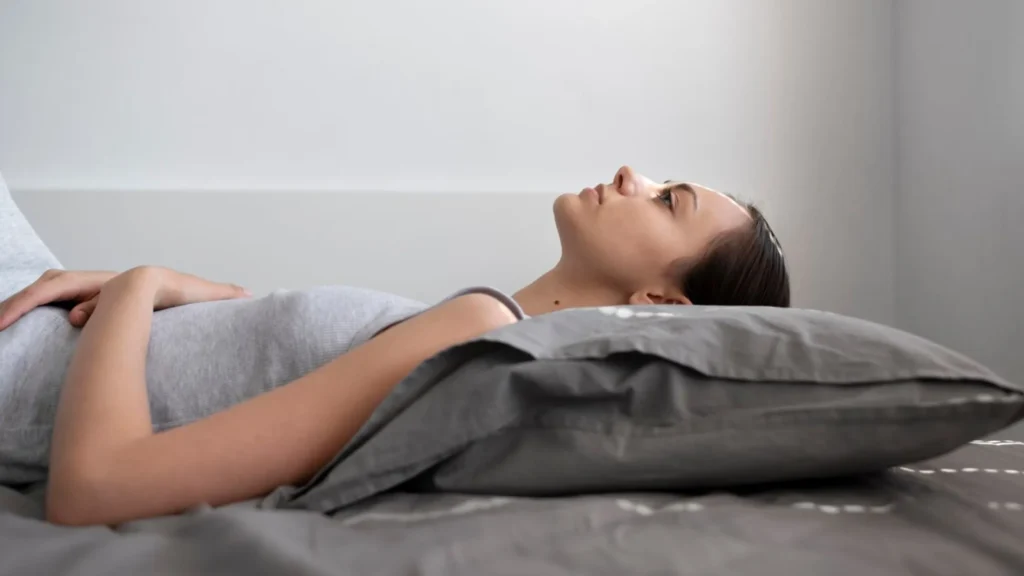
Can You Master the Art of Sleeping with Intercostal Muscle Strain?
Intercostal Muscle strain, often characterized by sharp pain around the ribcage, can turn even the most mundane activities into discomforting endeavors. But none is as challenging as finding a peaceful night’s rest amidst the throes of such discomfort. How to sleep with intercostal muscle strain? This guide explores strategies to help you navigate the night and embrace the slumber you deserve, even with intercostal muscle strain weighing heavily on your chest.
Understanding Intercostal Muscle Strain
Before delving into sleep strategies, it’s crucial to grasp the nature of intercostal muscle strain. These muscles, situated between the ribs, play a pivotal role in stabilizing the chest cavity during breathing. When strained, often due to sudden movements or overexertion, they can cause sharp pain and discomfort, particularly exacerbated by certain sleeping positions.
How to sleep with intercostal muscle strain?
Creating a Comfortable Sleep Environment
Optimal Mattress and Pillow Support
Ensuring you have the right mattress and pillows that offer optimal support is essential. Opt for a medium-firm mattress cushions the body without sinking too deeply, and select pillows that maintain proper spinal alignment to alleviate pressure on the ribcage.
Temperature Regulation
Maintain a relaxed, comfortable sleep environment to minimize discomfort and prioritize your health. Consider using breathable bedding materials and adjusting the room temperature to your preference, ensuring optimal conditions for restorative sleep and overall well-being.
Strategic Sleep Positions
Back Sleeping with Support

Sleeping on the back can relieve many individuals with an intercostal muscle strain. Place a pillow under the knees to reduce strain on the lower back, and gently elevate the head with another pillow to support the neck and upper back.
Side Sleeping with Cushioning

If back sleeping isn’t feasible, how to sleep with intercostal muscle strain? Side sleeping with proper cushioning can alleviate pressure on the affected muscles. Place a pillow between the knees to align the spine and support the ribcage, reducing discomfort.
Avoidance of Stomach Sleeping

While stomach sleeping may seem comfortable for some, it can exacerbate intercostal muscle strain by placing undue pressure on the chest and ribs. Avoid this position to prevent worsening of symptoms and promote better sleep quality.
Relaxation Techniques
Deep Breathing Exercises
Practice deep breathing exercises before bedtime to promote relaxation and alleviate tension in the chest and ribcage, especially when dealing with intercostal muscle strain. Inhale gently through your nostrils, feeling the expansion of your abdomen as if it’s gracefully embracing a soft breeze. Then, exhale gently through your mouth, feeling any tension melt away with each breath you release. These exercises can help relax the muscles surrounding the ribs, easing discomfort and facilitating a more peaceful sleep despite intercostal muscle strain.
Progressive Muscle Relaxation
Engage in progressive muscle relaxation techniques to ease muscle tension throughout the body. Starting from the toes and working your way up to the shoulders, tense each muscle group for a few seconds before releasing, allowing for deep relaxation.
Pain Management Strategies
Heat Therapy
Before heading to bed, consider treating the affected area with a heating pad or a warm compress to ease the discomfort of sore muscles. The gentle warmth provides soothing relief, encourages relaxation, and enhances blood circulation by promoting calm and improving circulation.
Over-the-Counter Pain Relief
When considering how to sleep with intercostal muscle strain, incorporating over-the-counter pain relief medication, such as ibuprofen or acetaminophen, as directed by your healthcare provider, can be beneficial in managing pain and discomfort associated with the condition. These medications can help alleviate symptoms, allowing for a more comfortable sleep experience despite intercostal muscle strain. Additionally, combining medication with supportive pillows, strategic sleep positions, and relaxation techniques can further enhance sleep quality and promote healing of the affected muscles.
Establishing a Bedtime Routine
Consistent Sleep Schedule
Maintain a consistent sleep schedule for the same bedtime and wake-up time each day to regulate your body’s internal clock and promote more restful sleep, even with intercostal muscle strain.
Relaxing Wind-Down Routine
Partake in soothing activities before bedtime to communicate to your body that it’s time to relax and unwind. Whether reading a book, taking a warm bath, or practicing gentle stretching, find activities that promote relaxation and prepare you for sleep.
Seeking Professional Guidance
Consultation with Healthcare Provider
If intercostal muscle strain persists or significantly impacts your ability to sleep, consult with a healthcare provider for personalized guidance and treatment options.
Conclusion
While intercostal muscle strain may pose challenges to achieving restful sleep, implementing these strategies can help alleviate discomfort and promote better sleep quality, even with intercostal muscle strain. How to sleep with intercostal muscle strain? From optimizing your sleep environment to practicing relaxation techniques and establishing a bedtime routine, taking proactive steps to support your sleep health can make a significant difference in managing intercostal muscle strain and embracing rejuvenating rest.





